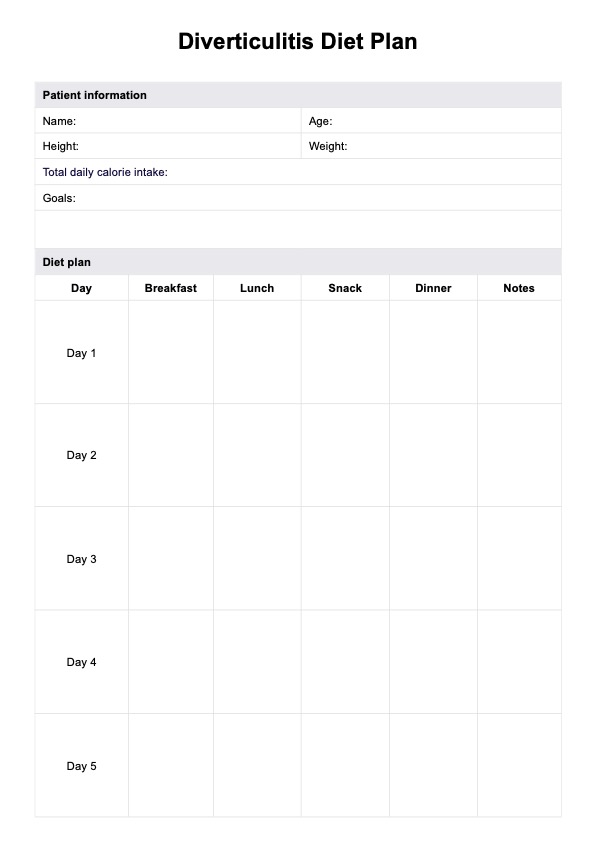During a diverticulitis flare-up, clients may benefit from following a clear liquid diet to allow the digestive system time to rest. This could include consuming broth, clear juices, and gelatin while temporarily avoiding solid foods. Once symptoms start improving, they might gradually transition to a low-fiber diet before slowly reintroducing high-fiber foods as tolerated. They should consult a healthcare professional to determine its suitability for their needs.

Diverticulitis Diet Plan
Manage your client's diverticulitis symptoms with our Diverticulitis Diet Plan. Incorporate this template into your practice for free.
Diverticulitis Diet Plan Template
Commonly asked questions
Some foods may contribute to digestive discomfort or inflammation, which could potentially trigger a flare-up in certain individuals. Processed foods, red meat, and low-fiber foods might slow digestion and increase pressure in the colon. Encouraging a balanced diet with dietary fiber from high-fiber foods, such as whole grains and vegetables, may help support digestive health and reduce the likelihood of a diverticulitis attack.
During a diverticulitis flare-up, it's best to follow a diet of clear liquids, including vegetable juice, broth, and water. As symptoms improve, you can gradually add canned or cooked fruits and other low-fiber foods before transitioning back to a healthy diet.
EHR and practice management software
Get started for free
*No credit card required
Free
$0/usd
Unlimited clients
Telehealth
1GB of storage
Client portal text
Automated billing and online payments











